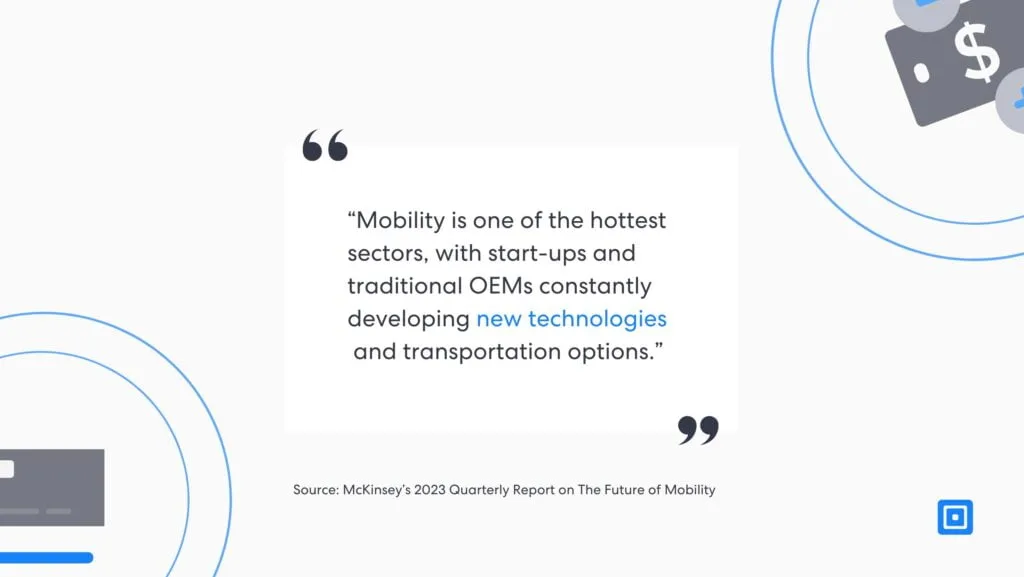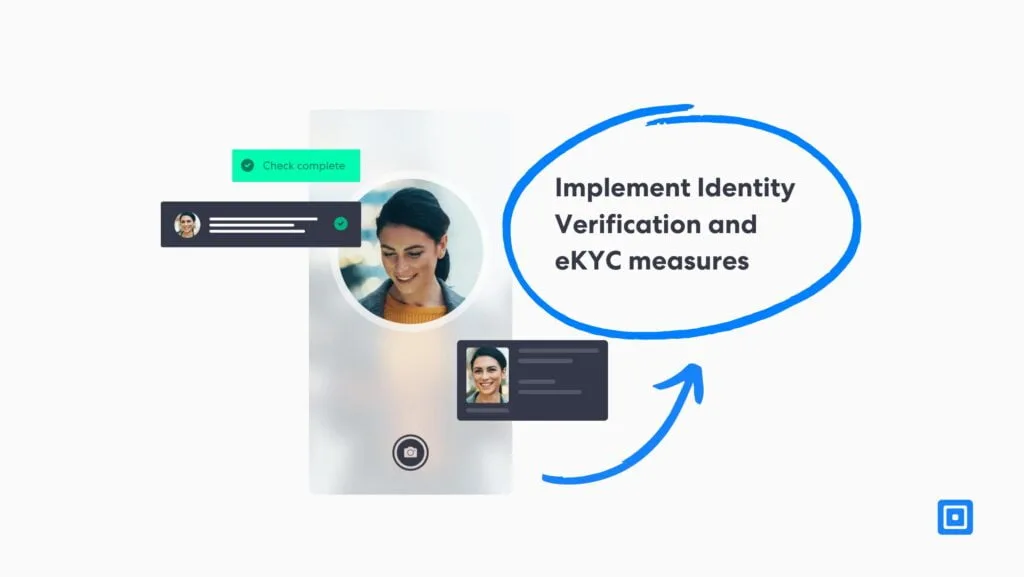Wir alle sind schon einmal um Mitternacht an einem fremden Ort in ein unbekanntes Fahrzeug gestiegen und mussten uns daran erinnern, dass es vollkommen sicher ist, obwohl uns unsere natürliche Intuition etwas anderes warnt. Doch wie bei fast jeder Entscheidung, die wir in unserem täglichen Leben treffen, ist immer ein gewisses Risiko damit verbunden. Aber was wäre, wenn dieses Risiko drastisch minimiert werden könnte? Was wäre, wenn Sie die Gewissheit hätten, dass Ihr Fahrer genau der ist, für den er sich ausgibt? Der Mobility-as-a-Service-Sektor (MaaS) könnte diese Gewissheit bieten, indem er robuste Verifizierungsprozesse für Passagiere und Fahrer implementiert und so das Vertrauen in On-Demand-Transportdienste stärkt.
Die Tendenz, anzunehmen, dass nur der Fahrgast gefährdet ist, ist ebenfalls naiv, wie der jüngste Artikel der Seattle News über den Tod eines Taxifahrers in den USA durch Fahrgäste deutlich macht. Die Fahrgäste hatten falsche Profile in der App verwendet und mit einer Karte unter falscher Identität bezahlt. Die Wahrheit ist, dass ohne umfassende Verifizierungsprozesse niemand von uns weiß, mit wem wir im Auto sitzen. Sicherheit kann weder als Fahrgast noch als Fahrer gewährleistet werden. Was muss also getan werden?
Komfort ist das A und O
Der Mobilitätssektor hat in den letzten Jahren drastisch zugenommen, da wir uns in wenigen Minuten von einem Auto abholen lassen können. Fast alles kann an unsere Haustür geliefert werden. Unternehmen wie Deliveroo begannen, ausschließlich Essen zum Mitnehmen anzubieten, und mittlerweile kann man sogar pharmazeutische Produkte bei Boots über deren App bestellen. Bequemlichkeit ist das A und O, denn abgelegene Lebensstile erfordern, dass Waren und Dienstleistungen auf Rädern zu uns nach Hause gebracht werden.

Dieser Wandel hat zum Konzept „Mobility on Demand“ (MOD) geführt, einer neuen Art, Mobilität zu denken, die auf der neu gewonnenen Fähigkeit basiert, Menschen und Güter zu transportieren, wann und wo immer sie benötigt werden. Der Aufstieg autonomer Fahrzeuge und Elektroautos verändert das MOD weiter, indem er diese Dienste sicherer, bequemer und effizienter macht. Mit der zunehmenden Verbreitung dieser Technologien erweitern sie die Fähigkeiten des MOD und ermöglichen eine nahtlosere Integration in das tägliche Leben.
In Kombination mit Mobility as a Service (MaaS) wird MOD noch leistungsfähiger. MaaS integriert verschiedene Mobilitätsdienste in eine einzige Plattform und bietet häufig Abonnementpakete, die unbegrenzten Zugang zu Transportmöglichkeiten auf Abruf bieten. Diese Kombination stellt sicher, dass bequeme Mobilitätsdienste immer in Reichweite sind. Da diese Plattformen jedoch immer mehr zum Mainstream werden, müssen wir die vorhandenen Sicherheitsmaßnahmen ständig neu bewerten, da wir Gefahr laufen, dass sie veraltet sind.
Weder Passagiere noch Fahrer sind sicher
Das US-amerikanische Government Accountability Office hat Anfang des Jahres (Februar 2024) einige Statistiken veröffentlicht, die die Notwendigkeit einer stärkeren Regulierung von Mitfahrdiensten unterstreichen.

6 Bundesdatenbanken enthalten einige Daten über Angriffe auf Fahrer – eine Datenbank meldete einen tödlichen Angriff im Jahr 2019.
3 Mitfahrunternehmen Berichten Sie öffentlich über tödliche Körperverletzungen und die schwerwiegendsten Formen sexueller Übergriffe. Im Jahr 2019 wurden etwa 4.600 derartige sexuelle Übergriffe gemeldet.
Fünf Taxiunternehmen die beauftragt wurden, Daten zu Vorfällen zu sammeln, diese aber nicht öffentlich zugänglich zu machen, darunter auch Daten zu Übergriffen.
Dieser letzte Punkt darf nicht unbemerkt bleiben. Er öffnet unsere Augen dafür, was genau hinter der Fassade der Sicherheit in diesen Fahrzeugen lauert, denn die Tatsache, dass Daten zu Vorfällen vor der Öffentlichkeit verborgen werden, ist äußerst besorgniserregend. Interessanterweise weisen diese Statistiken jedoch auch auf ein Sicherheitsrisiko für Fahrer hin, wenn sie unbestätigte Passagiere in ihren Autos mitführen.

Bei der Betrachtung dieses Sicherheitsrisikos können wir uns den jüngsten Nachrichtenartikel der Seattle Times ansehen, in dem ein neues Gerichtsurteil um Uber- und Lyft-Fahrer vor Angriffen durch Fahrgäste zu schützen. Das 9. US-Berufungsgericht hat in einer 2:1-Entscheidung entschieden, dass Rideshare-Unternehmen verpflichtet sind, gründliche Hintergrundüberprüfungen ihrer Kunden durchzuführen. Der Fall geht auf eine Klage der Familie eines Uber-Fahrers zurück, der 2020 in Issaquah von den Fahrgästen seines Fahrzeugs erstochen wurde. Das 9. Berufungsgericht entschied, dass Uber den Fahrer nicht gewarnt hatte, dass diese Fahrgäste ein Konto unter falschem Namen und einer nicht verifizierten Zahlungsmethode eröffnet hatten. Die Anwälte argumentierten, dass Uber „es versäumt habe, grundlegende Technologien zur Identitätsüberprüfung einzusetzen“, und wiesen auf einen Mangel an robusten Kontrollen der Fahrgäste hin.
Welche Arten von Prüfungen werden benötigt?
Fahrer- und Passagierverifizierungsprozesse sind ein wichtiger nächster Schritt in die Zukunft von Mobilität als Service. Die Verifizierung muss durch genaue und effiziente Kontrollen rationalisiert werden, darunter:
Dokumentenprüfungen: Überprüfung der Gültigkeit des Führerscheins und aller anderen wichtigen, von der Regierung ausgestellten Dokumente.
Biometrische Identitätsprüfung: Sie verwenden eine biometrische Gesichtserkennungsmaschine, um biometrische Daten eines bereitgestellten Selfies zu untersuchen und sie mit von der Regierung ausgestellten Dokumenten zu vergleichen.
DBS-Prüfungen: Durchführung einer Hintergrundüberprüfung, um festzustellen, ob Fahrer Straftaten begangen haben.

Die Zukunft des MaaS-Sektors

Die Sicherheit von Ridesharing liegt nicht nur in der Verantwortung von MaaS-Unternehmen, sondern ist auch ein Anliegen der Öffentlichkeit. Uber und andere Ridesharing-Plattformen müssen umfassende Verifizierungssysteme für Fahrer und Mitfahrer implementieren und dabei fortschrittliche automatisierte Lösungen nutzen, um tragische Vorfälle zu verhindern und Vertrauen aufzubauen.
ComplyCube bietet erstklassige Fahrerüberprüfungsdienste, einschließlich Integration mit der DVLA im Vereinigten Königreich und der AAMVA in den Vereinigten Staaten. Dies ermöglicht eine äußerst gründliche Identitätsüberprüfung, Dokumentenvalidierung und Hintergrundüberprüfung für Fahrer.
Zu ihren umfassenden Fahrerüberprüfungen und Kompetenzbewertungen für die Mobility-as-a-Service-Branche (MaaS) gehören Verbindungen zur Driver and Vehicle Licensing Agency (DVLA) in Großbritannien und zur American Association of Motor Vehicle Administrators (AAMVA) in den USA.
Um mehr zu erfahren, wenden Sie sich an einen ihrer Compliance-Experten.



